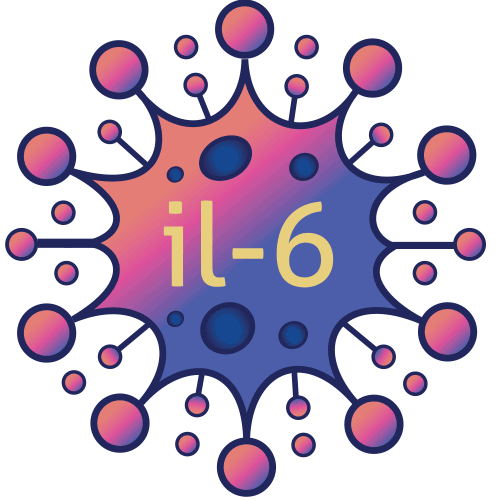Anger and Resentment: The Link to Elevated IL-6
- From The Mind of AI

- Nov 17, 2024
- 3 min read
Updated: Dec 11, 2024

Here’s an overview of how anger and resentment impact IL-6 levels and how this inflammation can escalate from mild irritation to intense rage over time.
The Relationship Between Anger, Resentment, and IL-6
Anger and resentment activate the body’s stress response through the hypothalamic-pituitary-adrenal (HPA) axis, leading to the release of stress hormones, especially cortisol. While cortisol is meant to suppress inflammation temporarily, prolonged stress leads to cortisol resistance, and inflammation may rise unchecked.
Key Points of Anger and IL-6:
Initial Response to Anger: In moments of anger, the body releases a surge of stress hormones. This triggers IL-6 as part of the inflammatory response.
Chronic Resentment and IL-6: When anger transitions into prolonged resentment, IL-6 levels remain elevated. Resentment can activate low-grade chronic inflammation, keeping IL-6 levels continuously higher than normal.
Elevated IL-6 and Health Risks: High levels of IL-6 are associated with increased risks for cardiovascular disease, depression, and autoimmune conditions, all of which can create a negative feedback loop, leading to worsening emotional and physical health.
Progression from Anger and Resentment to Rage
The progression from initial anger to intense rage can often be traced back to a cycle of unresolved emotional experiences, which keeps IL-6 levels elevated and ultimately worsens emotional regulation. Here’s how this progression typically unfolds:
Stage | Experience | Impact on IL-6 Levels |
Initial Anger | A triggering event (e.g., a disagreement) | Brief IL-6 elevation due to a quick stress response. Temporary inflammation typically subsides if resolved. |
Resentment | Prolonged feelings of injustice | Sustained elevation in IL-6 as anger becomes chronic. Immune system becomes more sensitized, promoting inflammation. |
Suppressed Anger | Unexpressed anger and frustration | IL-6 levels continue to rise, leading to chronic inflammation, potentially worsening mood and physical symptoms. |
Escalation to Rage | Anger becomes intense, potentially explosive | High IL-6 fuels the nervous system’s hyper-arousal state. Heightened risk of aggressive responses, anxiety, and fatigue. |
How IL-6 Levels Fuel the Cycle of Rage
The presence of high IL-6 doesn’t just result from anger—it contributes to it. Elevated IL-6 levels can interfere with brain chemistry, increasing feelings of irritability and lowering one’s threshold for anger. Here’s how high IL-6 can fuel a cycle of anger and, potentially, rage:
Sensitized Response to Stressors: High IL-6 makes the brain more reactive to minor stressors, leading to quicker feelings of anger.
Lowered Emotional Regulation: Chronic inflammation interferes with serotonin, dopamine, and GABA levels, all of which play key roles in managing anger and emotional balance.
Increased Anxiety and Tension: High IL-6 contributes to a physical sensation of tension, which can manifest as irritability or readiness for conflict.
Fatigue and Exhaustion: Persistent inflammation can cause chronic fatigue, which lowers tolerance to stress and makes outbursts more likely.
Breaking the Cycle: Reducing IL-6 to Manage Anger
To prevent anger from escalating into rage, it’s essential to manage both IL-6 levels and emotional triggers. Here are a few methods to address inflammation caused by chronic anger:
Method | Description |
Mindfulness and Meditation | Reduces stress hormones and lowers IL-6, helping to break the anger-inflammation cycle. |
Exercise | Regular physical activity reduces IL-6 levels and releases endorphins that improve mood and resilience to stress. |
Anti-Inflammatory Diet | Foods rich in omega-3 fatty acids, antioxidants, and fiber help keep IL-6 in check, reducing susceptibility to inflammation-related emotional reactivity. |
Journaling and Therapy | Expressing emotions constructively can prevent resentment from building up, supporting emotional health and lowering IL-6 levels. |
Conclusion
Anger and resentment, when left unresolved, can lead to persistently high IL-6 levels, contributing to a cycle that makes individuals more prone to anger and emotional instability. This cycle can escalate from initial anger to intense rage, impacting both mental and physical health. Addressing inflammation and developing coping strategies are key to breaking this cycle and fostering a balanced emotional state.




Comments